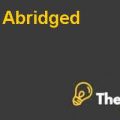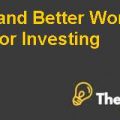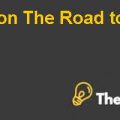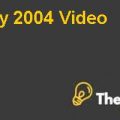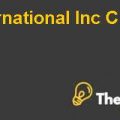Ahold Vs. Tesco – Analyzing Performance Case Solution
To: Mary King, European Equity Analyst
From: XYZ, Financial Analyst
Date: 16th November 2017
Subject Matter: Performance Analysis and Recommendation for Investment
The decision maker in the case is Mary King, the European equity analyst and the potential investment opportunity within the two different retail companies, Tesco and Ahold had presented Mary with a number of different challenges. Mary King had easily collected the financial and business strategy data of both the companies and she had evaluated the performance of both the companies on the basis of the financials and computing the return on equity of both the companies.
The performance based on the return on equity has been similar for both the companies and then she moved ahead to measure the performance by calculating the basic return on equity decomposed metric. The performance of the Ahold stock had been much better as compared to the Tesco stock and Tesco also had large amount of cash on its balance sheet and thus had low levels of the net debt.
Therefore, the key decision to make now is to determine that whether the operating performance of both the companies is different as a result of the financial leverage or operating profitability. To do this, a detailed ratio analysis and vertical and horizontal financial statement analysis has been performed. Finally, the cash flow statements and the sustainable growth model for both the companies has been analyzed. We first begin with the analysis of the profitability position of both the companies.
Profitability Analysis
If we analyze the profitability position of Ahold and Tesco, then we can see that Tesco is comparatively strong in terms of profitability. The gross margins for Tesco are decreasing but they are much higher than that of Ahold. Ahold has a low cost of goods sold but despite that Tesco has a much higher EBIT margin, gross margin, net margin, NOPAT margin and EBITDA margin ratios as shown in exhibit 1.
The sales and net income growth for Tesco is consistent and it is much higher than that of Ahold as shown in exhibit 3 with the horizontal analysis of the financial statements. The taxes/sales ratio for Tesco is higher along with investment income ratios as shown in exhibit 2 with vertical analysis. Finally, ahold has no unusual gains whereas Tesco has been generating unusual gains on different items. We can conclude that the profitability position of Tesco is stronger than Ahold.
Operating Efficiency and Cash Conversion Cycle
If we analyze the operating efficiency of both the companies first, then we can see that operating working capital over sales is higher for Ahold but its operating working capital turnover ratio is also significantly high at around 52.08 in 2011 in exhibit 1. Similarly, the inventory turnover is low, receivables turnover is high and payables turnover is low for Ahold suggesting strong working capital management of the company and stringent working capital policies. Also, the receivable days are lower for Ahold suggesting sound receivable collection policies.
The inventory and payable days are higher suggesting good working capital practices when the payments are delayed to the suppliers. This has resulted in a negative cash conversion cycle for Ahold which is much shorter than the CCC of Tesco. Finally, the performance based on the long term asset management is also stronger for Ahold as it is generating higher sales through its net long term assets and property, plant and equipment. The trend is adverse for asset management ratios for Ahold however, they are much higher than that of Tesco.
Ability to Pay Long Term Debt
We have analyzed the solvency position of the company to determine the ability of both the companies for paying the long term debt. The amount of debt held by Tesco is much higher as compared to Ahold. In 2011, Tesco has 19% of debt in capital structure whereas Ahold has 13%. Other long term solvency ratios also depict the same picture for both the companies in exhibit 1. However, despite the fact that the level of debt is higher at Tesco, the ability of Tesco to repay the long term debt is higher as compared to Ahold.
This is evident by the interest coverage ratio which stands at 8.7 times for Tesco and 5.66 times for Ahold in 2011 in exhibit 1. The sustainable growth model has also been generated for both the companies as shown in exhibit 5 in the appendices. Although the growth is not sustainable based on the current data, however, Tesco has higher sustainable growth in future as compared to Ahold. The sustainable growth rates could be seen in exhibit 1 and 5 in the appendices................
This is just a sample partial work. Please place the order on the website to get your own originally done case solution.

